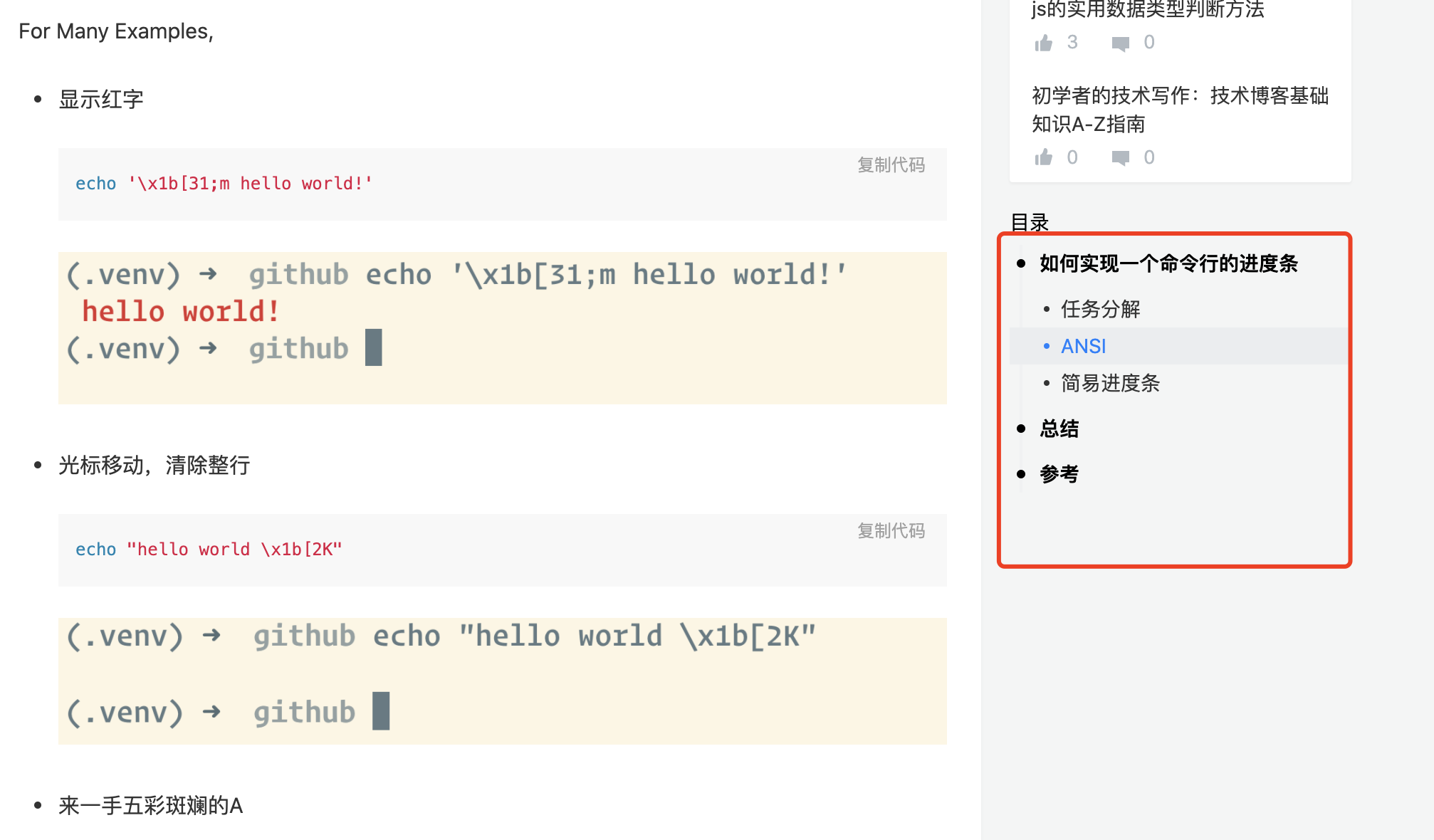在一些静态站点,页面滑动,页面大纲会随着页面滑动对应更新,如下图

这里有一种对应关系
- 页面滑动时,目录对应条目高亮
- 点击目录对应条目,页面滑动到对应位置
这里看下如何比较优雅的实现这种场景
前置
我们有页面各个标题的内容,以及标示信息,比如id。结构类似
[
{
"depth": 1,
"id": "字符串匹配",
"value": "字符串匹配"
},
{
"depth": 2,
"id": "暴力",
"value": "暴力"
},
{
"depth": 2,
"id": "rk",
"value": "RK"
},
{
"depth": 2,
"id": "kmp",
"value": "KMP"
},
{
"depth": 2,
"id": "基于有限自动机的字符串匹配",
"value": "基于有限自动机的字符串匹配"
},
{
"depth": 2,
"id": "参考",
"value": "参考"
}
]点击目录,更新页面位置
这个比较好处理,给每个标题一个链接锚点,锚点为
`${window.location.hostname}${window.location.pathname}#${标题id}/`比如 字符串匹配的路径可能为 https://example.com/path/#字符串匹配,点击目录滚动到对应锚点即可。
-
通过
a标签,<a href="https://example.com/path/#字符串匹配">跳转 -
通过
scrollIntoView滑动, id为对应的标题iddocument .getElementById(id) .scrollIntoView({ inline: 'nearest', behavior: 'smooth' });
页面位置变更,目录对应更新
这里有两个方案
- 监听页面滚动位置,判断哪个标题内容进入到视图,然后更新对应的目录标题样式
- 浏览器提供了原生的API
IntersectionObserver, 用于观测DOM元素的交叉情况,我们使用``IntersectionObserver`监听各个标题区块即可
将对应逻辑抽出一个hook
import React, { useState, useEffect } from 'react';
/**
* 获取当前锚点id
* @param anchorsId 锚点ids
*/
const useAnchor = (anchorsId: string[]) => {
const [activeAnchor, setActiveAnchor] = useState(null);
useEffect(() => {
// 观测进入到视图的内容
const observer = new IntersectionObserver(entries => {
entries.forEach(entry => {
if (entry.isIntersecting) {
setActiveAnchor(entry.target.id);
}
});
});
forEach(anchorsId, id => observer.observe(document.getElementById(id)));
return () =>
forEach(anchorsId, id => observer.unobserve(document.getElementById(id)));
}, []);
return activeAnchor;
};
/**
* 对一个可遍历对象每一个元素操作
* @param iterator 可遍历对象
* @param func 操作函数
*/
function forEach<T>(iterator: Iterable<T>, func: (args: T) => unknown): void {
for (let val of iterator) {
func(val);
}
}
export default useAnchor;
获取到当前进入到页面的标题id后,更新目录。